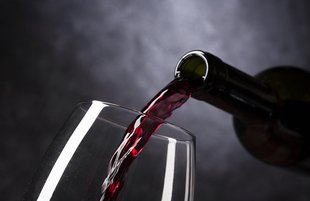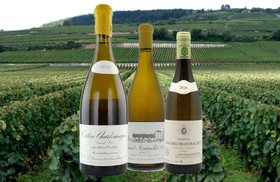Dominio de Pingus: Wine Styles, Best Wines To Buy (2025)
The Dominio de Pingus winery has enraptured wine connoisseurs since its first bottle of wine. The first vintage (1995) was such an exceptional enigma that wine critic Robert Parker declared it one of the greatest and most exciting ones he’s tasted.
The Spanish winery’s second wine - Flor de Pingus - is also equally coveted by wine lovers.
What makes these Pingus’ reds so unique? Which ones should you not miss in 2024?
Take a tour of the brilliant Dominio de Pingus winery, its fascinating history, unique wine styles, and the best Pingus wines to invest in now.
You’ll also discover a hassle-free way to invest in these delicious Pingus wines and more!
Further reading
- Become a Wine Investing expert with this ultimate guide!
- Want to explore a few more mesmerizing red wines? Check out these delectable Merlots and stunning Shiraz wines.
A Quick Intro To Domaine Pingus

Dominio de Pingus is a prestigious bodega (winery) located in Quintanilla de Onesimo in the Ribera del Duero region of Castilla y León. It was founded by the Danish oenologist Peter Sisseck.
Situated in La Horra, the Pingus vineyards are planted with the region’s oldest vines of the Tinto Fino (Tempranillo) grape variety.
The estate is most famous for its grand vin red wine label Pingus. Its concentrated black fruit flavor, freshness, and oak notes compete with the likes of Spain’s leading Gran Reserva wine - Rioja.
The winery also produces a second wine, Flor de Pingus, and a special Cuvee, Ribera del Duero Amelia. It also crafts a wine from the Tempranillo grape sourced from old vines across the region, and others.
The flagship wine is made in miniscule quantities and has risen to a cult status in Spain’s wine circles.
Now let’s take a look at the origins of the Pingus brand.
History Of Pingus - A Story Of Passion
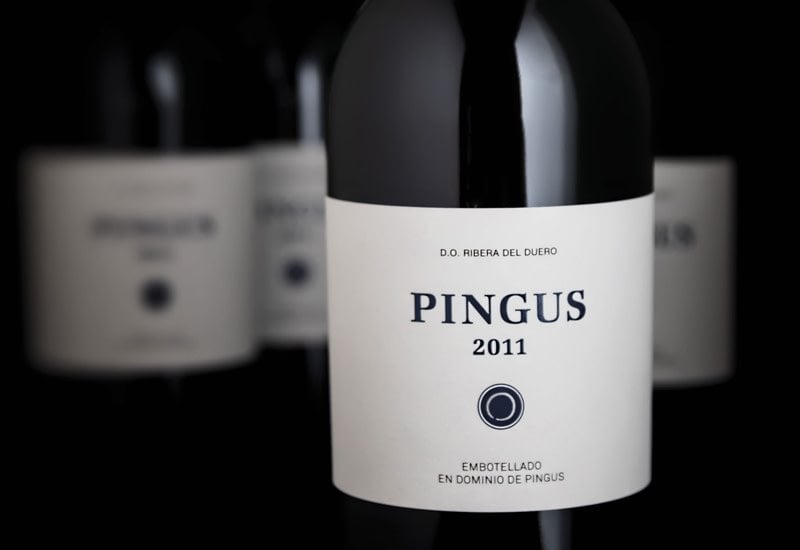
In 1993, Danish oenologist Peter Sisseck arrived in Spain to manage the Hacienda Monasterio winery. As he refined the Reserva wines of Hacienda Monasterio, he fell in love with the Ribera del Duero landscape.
He wanted to create a wine to showcase the brilliance of the local Tinto Fino grape and the richness of traditional Spanish winemaking.
In 1995, the Danish winemaker acquired a group of the region’s oldest vines in La Horra and produced his first vintage, ‘Pingus.’
Peter Sisseck used natural yeasts and small oak barrels (barriques) for malolactic fermentation - resulting in a red wine that competed with the region’s famous Rioja wine.
In March 1996, The wine scored 96 points from Robert Parker at an en primeur tasting in Bordeaux.
Interestingly, in November 1997, a ship carrying 75 cases of the 1995 vintage (expected to sell at $200 a bottle) sank in the Atlantic ocean. The sudden scarcity of the vintage led to a dramatic price increase of Pingus wines to over $400 a bottle.
In 2001, Sisseck, an expert on biodynamics, adopted biodynamic viticulture to maintain the health of his Tempranillo old vine plantings. He pruned his old vines and refined his winemaking techniques so that his Tempranillo could reach its best expression.
This is what makes the seductiveness of his great wine inimitable by other winemakers.
So, let’s discover the secret behind the rich Pingus wine.
From Vine to Wine: How Are Pingus Wines Made?

Pingus wine is made from the ripest grapes of the old vine plantings of Pingus vineyards. The vine plantings of Barroso (2.5 hectares) are over 65 years of age, while the ones in San Cristobal (1.5 hectares) are over 70 years of age.
The clay-limestone soils of the vineyard plots offer the perfect minerals for the Tinto Fino grape or the Tempranillo vines.
Besides, Sisseck’s biodynamic viticulture and unique winemaking techniques give the wine its delicious flavor. Here are some of his key biodynamic viticulture practices:
- The winemaker makes his Crianza and Reserva wines from gnarled old vines.
- He prunes the Tempranillo vines to 1-2 buds per stump to produce concentrated fruit.
- During vinification, the winemaker uses a large wooden vat and indigenous yeasts for fermentation. The natural yeasts do not tamper with the wine, letting them retain their authentic flavors.
- The wine is then aged on lees in a mix of new and old French oak barrels (barriques) to give the final wines their exotic textures.
- Also, Peter Sisseck uses minimal sulfur in his vinos.
Unlike Rioja wines, Sisseck focuses on pure Tinto de Pais (Tinto Fino) flavors without blending them with other red grapes like Carignan.
Ready to find out more about the various Pingus wines?
The Exotic Wines Of Dominio de Pingus
The Danish winemaker produces two types of Spanish wines - Crianza (aged for a year in oak barrels) and Reserva (aged for two years - one in oak.)
Flor de Pingus and Psi are the Crianza wines, while the flagship red wine is a Reserva wine.
1. Pingus

The iconic Dominio de Pingus wine, Pingus, is predominantly a Tinto Fino varietal wine produced from the region’s best vine plantings.
Besides the Tempranillo grape, this Spanish red wine also has a small percentage of Albillo and Garnacha (Grenache) grape varieties. Albillo adds seductive aromatics to the wine, while Garnacha adds finesse and smoky flavors.
Following traditional Spanish winemaking techniques, the winemaker uses a large wooden vat for the fermentation of this Reserva wine. The malolactic fermentation carried out in a large wooden vat adds texture and smoky oak flavors.
2. Flor De Pingus
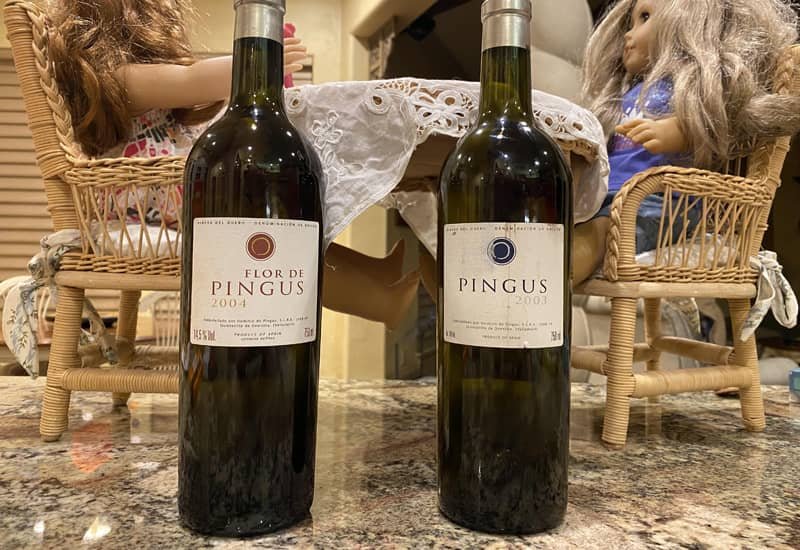
The second wine, ‘Flor de Pingus,’ was created to reflect the brilliant terroir of the Ribera del Duero region and the magic of old vines. The Wine Advocate refers to Flor de Pingus as one of the finest in Spain.
This second wine is made from old vines, except the 1999 vintage, which was a blend of both new and old vines.
Flor de Pingus is produced from the rented vineyard plots in the La Hora region. These vineyard plots have the region’s ripest grapes.
The fermentation of this Spanish wine is done using indigenous yeasts in 40% whole clusters for two to three weeks. The use of natural yeasts helps maintain the wine’s freshness.
After malolactic fermentation, the wine is aged in an old oak barrel to not alter the natural fruit flavors of the Tempranillo wine.
3. Other Pingus Wines

Let’s take a quick look at other fantastic wines produced by this Spanish bodega.
- They produce a single barrel Cuvee, Ribera del Duero “Amelia,” named after Peter Sisseck’s wife. It is made from 100+ year old vines through biodynamic winemaking.
- Sisseck also produces a Bordeaux wine ‘Château Rocheyron’ in the Saint Emilion appellation of Bordeaux, France.
- He also launched a joint project with Pablo Rubio, and the wine is called Psi. Psi is produced from the fruit sourced from the local grape growers (particularly in La Horra) that use biodynamic farming.
The purchased grapes come from 20 villages across the Ribera del Duero landscape.
The vinification of these purchased grapes occurs in large concrete vats before they are aged in concrete and oak tanks or French oak barrels.
Now, here are some classic recommendations if you’re looking for the perfect wine gift for a wine enthusiast.
Best Dominio de Pingus Wines To Buy In 2024 (Including Tasting Notes, Prices)
The best Pingus wines to buy in 2024 are:
1. 2004 Dominio de Pingus 'Pingus' Ribera del Duero, Spain
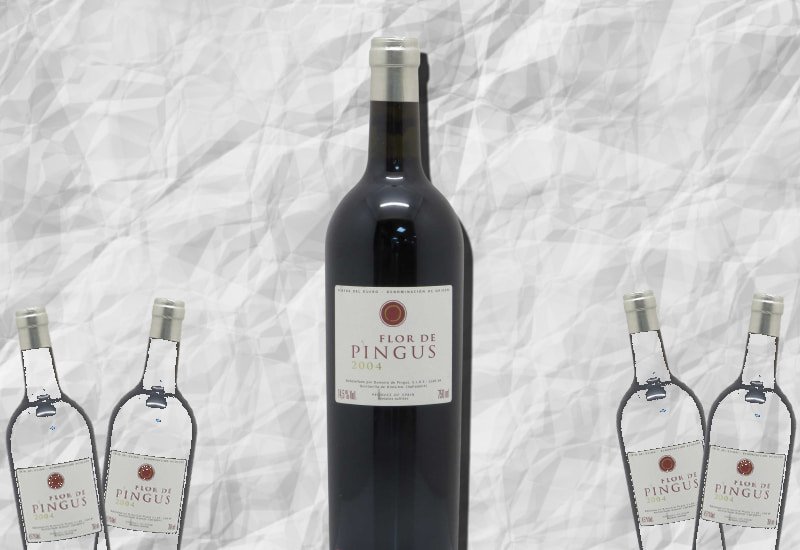
Peter’s tiny production of this vintage makes it one of the rarest reds.
The nose of this Spanish wine gives off molten berry wafts and lush herbal aromas. This Reserva wine has a Rioja wine taste on the palate, including the red fruit flavor with subtle earthy notes.
The freshness and minerality of this great wine also display the power of the region’s oldest vines.
Price of 2014 Dominio de Pingus 'Pingus' Ribera del Duero, Spain: $1,775
2. 2012 Dominio de Pingus 'Pingus' Ribera del Duero, Spain
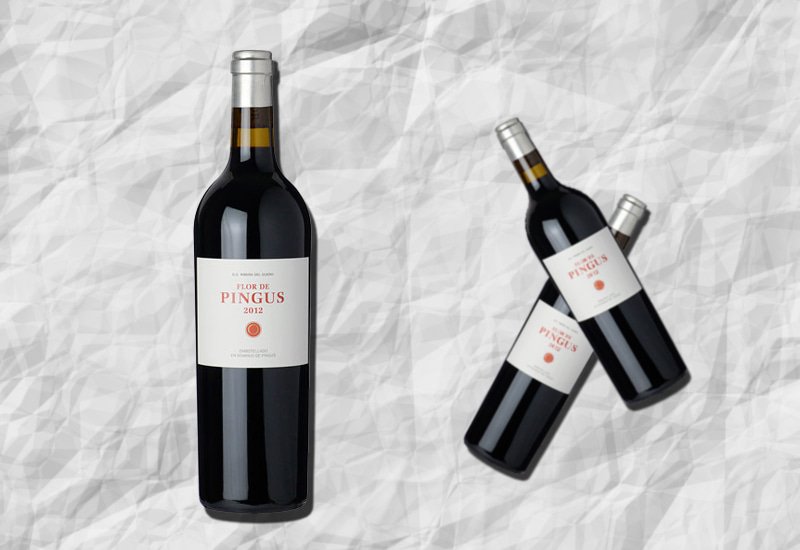
One of the greatest young red wines, this 2012 vintage reflects the unique terroir of Pingus vineyards and the richness of traditional Spanish winemaking.
It has ripe red fruit with intense berry and cherry compote scents balanced by earthy scents of sweet spices and smoky peat. The palate is rich with supple tannins - a great wine to drink with steak.
Price of 2014 Dominio de Pingus 'Pingus' Ribera del Duero, Spain: $1,239
3. 2014 Dominio de Pingus 'Pingus' Ribera del Duero, Spain
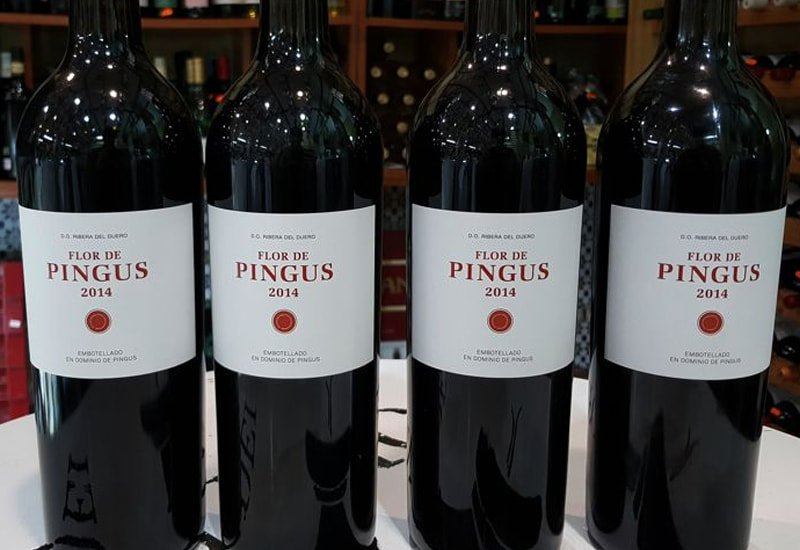
This vintage is often compared to the fine Rioja wines - and rightfully so.
The wine is made from the fruit of estate vineyards and gives off an exotic dark cherry aroma. Aging in French oak barrels has given this vintage fine tannins.
Price of 2014 Dominio de Pingus 'Pingus' Ribera del Duero, Spain: $1,265
4. 2016 Dominio de Pingus 'Pingus' Ribera del Duero, Spain
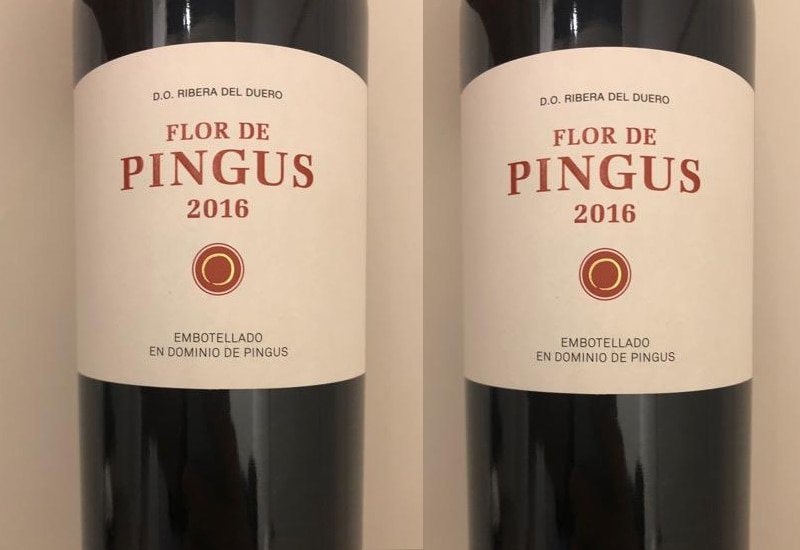
The 2016 vintage of this red wine is admired for its freshness and pure Tinta del Pais flavor. You may want to use a decanter before serving this one.
This Spanish wine has an intense ripe fruit aroma. It has great freshness, dense tannins, good acidity, and a smoky peat aftertaste on the palate.
Price of 2016 Dominio de Pingus 'Pingus' Ribera del Duero, Spain: $1,158
5. 2003 Dominio de Pingus 'Amelia' Ribera del Duero, Spain
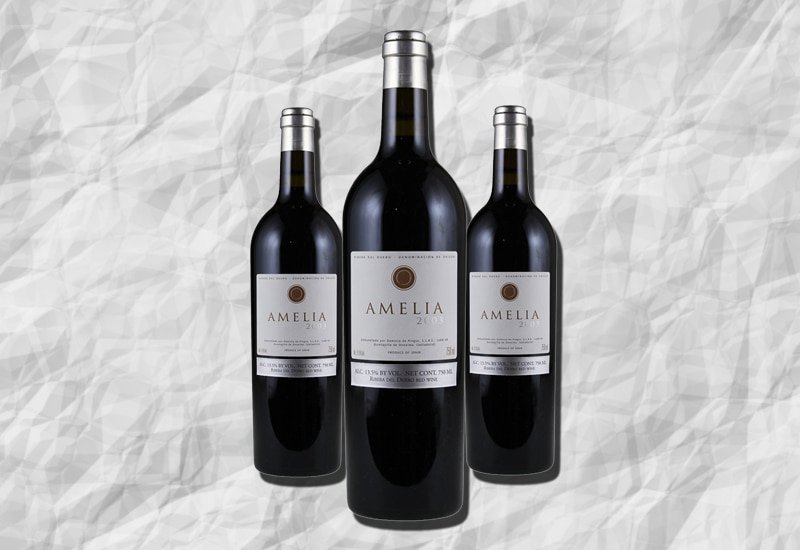
Another great wine from the Ribera del Duero region, this Tinto Fino vintage gives off an intense red fruit aroma with subtle smoky peat hints. The palate has fine tannins, black fruit flavor, and a smooth finish.
Price of 2003 Dominio de Pingus 'Amelia' Ribera del Duero, Spain: $499
6. 2005 Dominio de Pingus 'Amelia' Ribera del Duero, Spain
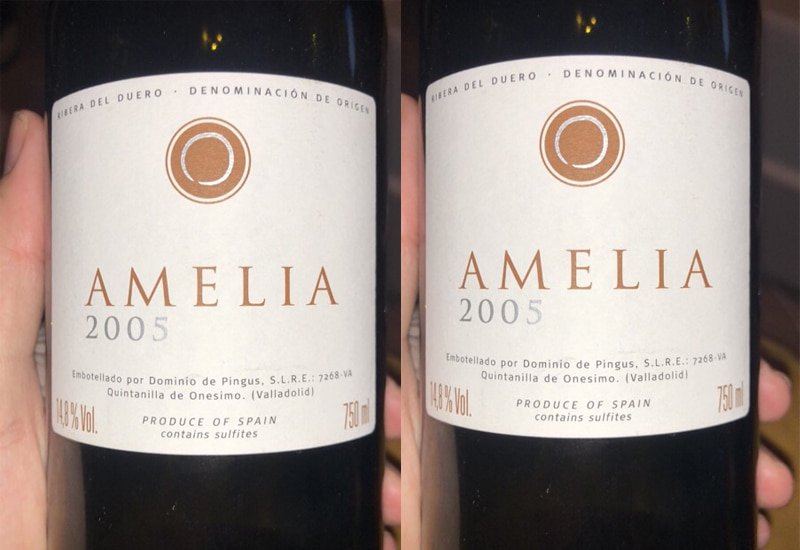
It gives off an intense red fruit aroma with a bitter chocolate note. On the palate, this red wine has excessive tannins and a rounded mouthfeel.
Price of 2005 Dominio de Pingus 'Amelia' Ribera del Duero, Spain: $499
7. 2018 Dominio de Pingus 'Amelia' Ribera del Duero, Spain

This young wine can spend a few years in the cellar.
A great wine for every red wine lover, the 2018 Amelia vintage has aromas of black fruit, dark cherry, and dark plums. The medium supple tannins on the palate give it a smooth finish.
Price of 2018 Dominio de Pingus 'Amelia' Ribera del Duero, Spain: $480
8. 2001 Dominio de Pingus 'Flor de Pingus' Ribera del Duero, Spain

Made from gnarled old vines, the 2001 Flor de Pingus has a seductive floral nose with red fruit aromas and subtle smoky hints. The palate has good depth, medium tannin, and a slightly bitter chocolate aftertaste.
Price of 2001 Dominio de Pingus 'Flor de Pingus' Ribera del Duero, Spain: $165
9. 2004 Dominio de Pingus 'Flor de Pingus' Ribera del Duero, Spain

Moving towards the final wines on the list, we have the delightful 2004 Flor de Pingus.
It has complex aromas of blackberry and dark plums with subtle oak nuances. It has high acidity and medium tannin levels.
Price of 2004 Dominio de Pingus 'Flor de Pingus' Ribera del Duero, Spain: $228
10. 2005 Dominio de Pingus 'Flor de Pingus' Ribera del Duero, Spain
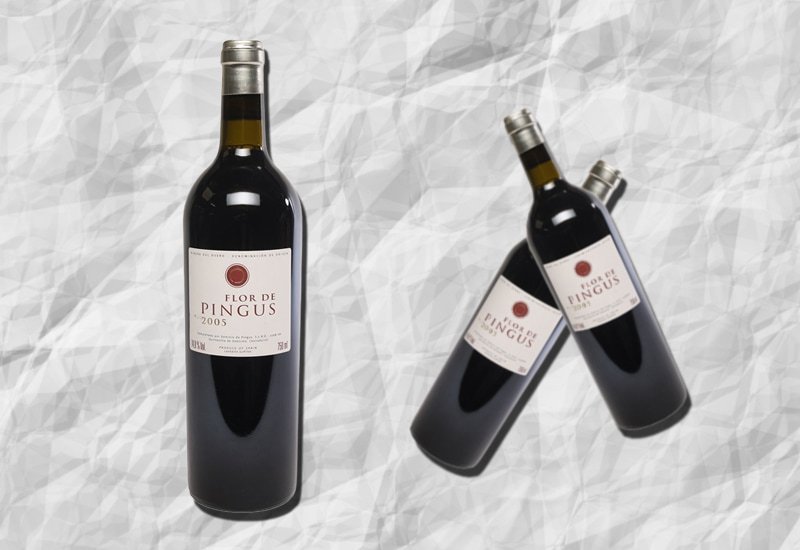
A deep purple Spanish wine, the 2005 vintage of Flor de Pingus has a beautifully expressive nose.
It has a black fruit bouquet with subtle oak, incense, and sandalwood notes. The palate has medium supple tannins with a savory fruit flavor, bright acidity, and new oak nuances.
Price of 2005 Dominio de Pingus 'Flor de Pingus' Ribera del Duero, Spain: $137
Now, here comes an important question:
Should You Invest In Dominio de Pingus Wines?
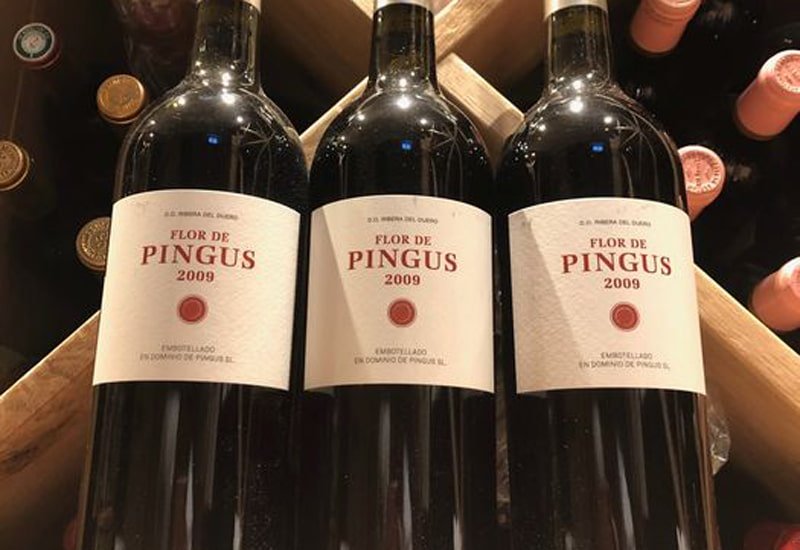
The excessive tannins of Dominio de Pingus wines give them an aging potential of 10-15 years. They develop delicious flavors as they mature.
Peter’s tiny production of 4000 Flor de Pingus cases and less than 500 cases of Pingus makes these “cult” wines a rarity. He only produced 25 cases of the Amelia 2005 vintage.
As for its price trends, let’s take its very first vintage bottle as an example. The price of the 1995 Pingus rose 140% at the beginning of 2014. If we look at the wines’ performance over 2015-’20, you’ll find a promising 45% price growth.
Similarly, the 2004 Pingus (a 100 pointer by the Wine Advocate) showed a steady growth of 11% over the past five years. The 2005 Pingus (with a Wine Advocate score of 99) has grown by 82% since its release.
Thanks to the limited production, longevity, and delicious flavors - this cult wine has become one of Spain’s most expensive wines.
So, if you’re looking for long-term investments, Dominio de Pingus has true gems to offer. Year after year, the winery releases some of the greatest young red wines that promise significant returns in the long run.
But, here’s something to consider.
How will you buy an authentic bottle of Pingus without encountering a counterfeit one? How would you store your bottle of fine wine, so it gains its best expression and yields maximum returns?
To begin with, you could invest in a genuine bottle of Pingus through a trusted wine investment company like Vinovest. But, that’s not all!
Read on.
Invest In Authentic Pingus And Other Fine Wines Through Vinovest

Vinovest is an online wine investment firm that helps you buy, store, and sell authentic Rioja, Cabernet Sauvignon, and other fine wines from around the world.
How Does It Work?
Here’s a quick and easy guide to start investing through Vinovest.
- Sign up on Vinovest
- Fill a small questionnaire to determine your risk appetite and investment preferences.
- Fund your account with a minimum of $1,000.
- Add a fine wine to your online wine portfolio.
Benefits
Want to know why Vinovest is a great online wine investment partner?
1. Best Prices
Vinovest sources your bottle of Syrah and other wines directly through wineries, global wine exchanges, and wine auctions - ensuring that you get the best price for your wine.
2. AI-Driven Platform
Vinovest’s AI-driven platform helps you buy and sell the finest wines hassle-free with just a few clicks.
3. Portfolio Management
Vinovest’s team of brilliant wine experts and data scientists helps build and track your wine investment portfolio and ensures that you get maximum returns.
4. Access To Rare Wines
Through Vinovest, you get access to leading wineries, rare wines, limited edition bottles, and upcoming vineyards across the globe. So, you won’t ever miss a bottle of rare wine.
5. Optimal Storage
Your bottle of Cabernet Sauvignon, Syrah, or any other fine wine is stored in temperature-controlled warehouses with optimal light, humidity, and vibration levels, ensuring that each wine gains its best expression.
6. Full-Coverage Insurance Policy
Every bottle of wine you buy through Vinovest comes with a full-coverage insurance policy that covers breakage, theft, and loss of bottle.
7. Hassle-Free Delivery
Found the right buyer for your exotic wine?
Vinovest will get your bottle delivered to your (or your buyer’s) doorstep hassle-free!
8. Ownership
Vinovest just handles the hard work - the decision is always yours. You have complete ownership over every bottle of wine you buy through Vinovest.
Add A Rare Dominio de Pingus To Your Wine Collection
The Pingus and Flor de Pingus wines have taken the global wine industry by storm.
These delicious Spanish wines are not only perfect for celebrating special occasions, but they also make great long-term investments.
Sign up with Vinovest to build a rewarding online wine portfolio today, starting with a classic Pingus!
